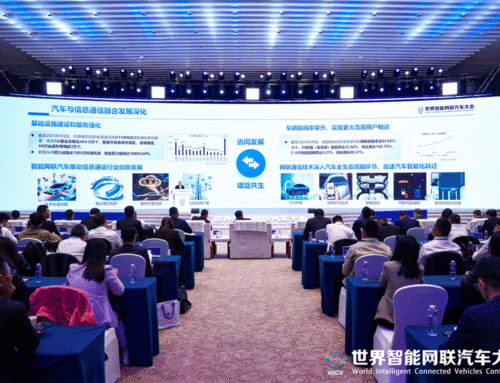On July 30, 2025, the Cyberspace Administration of China (CAC) released the National Informatization Development Report (2024) (Hereinafter referred to the “Report”), reviewing and assessing informatization progress across regions and sectors throughout the past year and illustrating key tasks for the 2025 year. New achievements in five dimensions are listed in the Report, including innovation-driven development, enabled growth, inclusive benefits, security enhancement, and open collaboration.
Major Advancements of Informatization made in 2024
- Enhanced Innovation Capabilities
China’s innovation capabilities have been significantly enhanced in 2024, marked by breakthroughs across core and emerging information technologies. For instance, the native operating system OpenHarmOS has exceeded 1 billion installations, and generative AI now supports over 600 million users through 302 government-approved services. Blockchain technology is deeply embedded across key sectors including logistics, trade, manufacturing, and energy, while substantial advances have also been achieved in quantum information and digital twins. This technological progress is reinforced by a robust digital industry, which reached 35 trillion yuan in total revenue, including 13.73 trillion yuan from software, supported by the introduction of new standardization frameworks for AI, IoT, and data governance. Furthermore, digital literacy continues to rise, with over 60% of adults and 64.69% of minors possessing functional digital skills. Talent development is also accelerating, with 227 dedicated undergraduate programs in the digital economy helping build a sustainable pipeline of specialized professionals.
- Stronger Enabling Role
China’s enabling digital capabilities have been driven by a robust and upgraded information infrastructure. The country has deployed more than 4.25 million 5G/5G-A base stations, achieving over 71% user penetration and covering more than 300 cities with 5G-A networks. Cellular IoT connections reached 2.656 billion, and gigabit fiber-optic networks now serve over 207 million users across 207 “Gigabit Cities”. The Industrial Internet provides comprehensive coverage across all 41 major industrial categories. Data capacity also grew significantly, with annual output increasing by 25% year-on-year to 41.06 ZB and total storage rising 20.8% to 2.09 ZB. An increasingly structured data ecosystem includes over one million data enterprises and seven major annotation bases. Digital-real economy integration continues to deepen, reflected in smart manufacturing’s 82.7% adoption of digital R&D tools and 65.3% automation of core processes. Green transition efforts are advancing through the construction of 246 national green data centers. Meanwhile, digital consumption remains strong, with online retail sales reaching 15.23 trillion yuan and broader digital spending exceeding 6 trillion yuan.
- Expanded Digital Inclusion
In the past year, China maintained growing momentum for digital inclusion, with internet users base reaching 1.108 billion that represents a penetration rate of 78.6%. Major expansion was seen in public service accessibility, including 418 million people using online medical services and 1.07 billion electronic social security cards issued, facilitating over 17.051 billion online service requests. Moreover, a national health insurance code now serves 1.2 billion people, and the newly launched elderly care platform has recorded more than 18 million visits, significantly improving digital outreach to senior citizens. When it came to cultural and content inclusion, meaningful outcomes included 4K/8K ultra-HD channels launched by all national and nine provincial broadcasters, 1.091 billion users, or 98.4% of internet users, served by online audiovisual services. These developments contributed to China’s improved performance in digital governance, as reflected in its rise to rank 35 in the UN E-Government Development Index, climbing six places since 2022.
- Reinforced Security Foundation
Thanks to enhanced governance, stricter compliance, and comprehensive enforcement, China’s foundation for secure digital development was strengthened. To illustrate, key regulatory frameworks were established with the official release of the Internet Government Application Security Management Regulations and the AI Security Governance Framework 1.0, accompanied by the introduction of 36 national standards, including three mandatory and three international standards. Moreover, cross-border data flows were systematically regulated with the implementation of new rules, resulting in 285 completed security assessments and 1,071 registered standard contracts for personal information exports. Strict app compliance enforcement addressed illegal data collection, processing over 90,000 public complaints. Concurrently, enhanced network governance, driven by over 150 new cyber laws and operations like “Qinglang” and the case-heavy “Jingwang 2024” (119,000+ investigated), reinforced a secure and compliant digital environment.
- Broader Openness Achievements
China’s 2024 global digital engagement has expanded through multilateral consensus-building and institutional cooperation. The country hosted the World Internet Conference Wuzhen Summit and launched the Global Data Cross-Border Mobility Cooperation Initiative, while actively shaping AI governance frameworks and promoting the Global Digital Compact. In addition, the concluded WTO E-Commerce Agreement, progress toward joining the CPTTP and DEPA and key data exchange mechanisms for data flow with EU, as well as a Sino-German MoU on cross-border data operation represented advanced international cooperation. Furthermore, digital trade grew robustly, with cross-border e-commerce reaching 2.71 trillion yuan, a 14% year-on-year increase. Reforms in electronic trade documents and the expansion of “Silk Road E-Commerce” to 33 partner countries further reinforced China’s integration into global digital markets.
2025 Key Tasks for China’s Informatization
- Boost self-reliance in tech innovation and industry growth
- Drive new productivity through IT empowerment
- Expand equitable access to digital benefits
- Improve conditions for sustainable development
- Deepen global cyberspace cooperation
In conclusion, the Report outlines expanded opportunities for foreign enterprises, highlighting broader market access in high-tech and modern services, deeper integration into China’s innovation ecosystem and industrial chains, and a more standardized operating environment under continuously improved business climates and institutional openness. SESEC will keep following its development and make timely updates.
Chinese sources of the article: https://www.cac.gov.cn/2025-07/30/c_1755590223034507.htm




